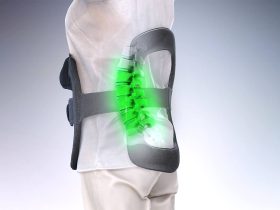Lower back pain affects millions of Canadians every year, making it one of the most common reasons people miss work or seek medical attention. While occasional discomfort may resolve on its own, persistent or severe back pain shouldn’t be ignored. Understanding when to seek professional treatment can make the difference between a quick recovery and chronic, debilitating pain.
Understanding the Root Causes
Lower back pain rarely appears without reason. Common culprits include poor posture during prolonged sitting, improper lifting techniques, muscle imbalances, and degenerative conditions like arthritis. For many office workers in the Greater Toronto Area, hours spent hunched over computers create muscular tension and spinal stress that accumulates over time.
Sports enthusiasts and weekend warriors face different challenges. Sudden movements, inadequate warm-ups, or pushing beyond current fitness levels can strain muscles and ligaments. Even seemingly minor incidents—reaching awkwardly for an object or twisting while carrying groceries—can trigger significant pain if the supporting muscles aren’t properly conditioned.
Age-related changes also play a role. As we get older, the cushioning discs between vertebrae naturally lose hydration and flexibility, making the spine more vulnerable to injury. However, age alone doesn’t determine your outcome—many people maintain excellent spinal health well into their senior years through proper care and exercise.
Warning Signs That Require Attention
Not all back pain demands immediate professional intervention, but certain red flags warrant prompt evaluation. Seek help if you experience pain radiating down one or both legs, numbness or tingling in the lower extremities, or difficulty controlling bladder or bowel function. These symptoms may indicate nerve involvement that requires specialized assessment.
Pain that persists beyond a few weeks, even if mild, deserves attention. What begins as minor discomfort can evolve into chronic issues if underlying problems remain unaddressed. Similarly, back pain that significantly limits your ability to perform daily activities—whether that’s playing with your children, completing work tasks, or enjoying recreational activities—signals the need for professional guidance.
If you’ve experienced trauma, such as a fall or car accident, professional evaluation becomes even more critical. Even when initial pain seems manageable, underlying tissue damage may not be immediately apparent.
The Role of Evidence-Based Treatment
Modern rehabilitation approaches emphasize active recovery over passive rest. While your grandmother might have recommended bed rest for back pain, current research shows that appropriate movement and exercise typically produce better outcomes. A qualified healthcare provider can design a personalized program that safely challenges your body while respecting its current limitations.
Manual therapy techniques address joint restrictions and muscle tension that contribute to pain. Combined with targeted exercises, these hands-on approaches help restore normal movement patterns and reduce strain on vulnerable structures. Education forms another crucial component—understanding proper body mechanics for lifting, sitting, and moving helps prevent future episodes.
For residents seeking physiotherapy in Scarborough, several qualified clinics offer comprehensive assessment and treatment. The key is finding a provider who takes time to understand your specific situation, creates an individualized treatment plan, and empowers you with knowledge and tools for long-term spine health.
Prevention Strategies for Long-Term Health
Once acute pain subsides, attention shifts toward prevention. Core strengthening exercises create a natural support system for your spine, reducing stress on ligaments and discs. These don’t require expensive gym memberships—many effective exercises use only body weight and can be performed at home in just minutes daily.
Flexibility work complements strength training by maintaining a healthy range of motion in the hips, hamstrings, and spine. Tight muscles create imbalances that force other structures to compensate, eventually leading to pain. Regular stretching, yoga, or mobility work addresses these issues before they become problematic.
Ergonomic awareness matters too. If you work at a desk, ensure your workstation supports neutral posture. Your monitor should be at eye level, your chair should support your lower back’s natural curve, and your feet should rest flat on the floor. Small adjustments can significantly reduce daily strain on your spine.
Taking the First Step
Living with back pain isn’t inevitable, nor should it be considered a normal part of aging or a busy lifestyle. Whether your discomfort stems from a specific injury or has developed gradually over time, professional guidance can help you understand the underlying causes and develop an effective recovery plan.
The path to a healthier back begins with accurate assessment and appropriate treatment. Don’t let fear, inconvenience, or assumptions about cost prevent you from seeking help. Many Canadians have extended health benefits that cover rehabilitation services, and early intervention typically requires fewer sessions than treatment of long-standing issues.
Your back supports you through every activity, every day. When it’s crying out for help, listening and responding appropriately isn’t just wise—it’s essential for maintaining the active, pain-free life you deserve.







